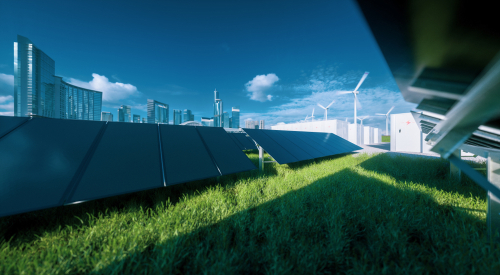New consortium created to accelerate the growth of energy storage for buildings

A new consortium has been created to accelerate the growth, optimization, and deployment of energy storage technologies for buildings.
The consortium, called Stor4Build, will be co-led by the U.S. Department of Energy’s National Renewable Energy Laboratory (NREL), Lawrence Berkeley National Laboratory (Berkeley Lab), and Oak Ridge National Laboratory (ORNL).
“The need for energy storage continues to be a grand challenge to achieving our decarbonized energy future,” Roderick Jackson, laboratory program manager for building technologies research at NREL, said. “To overcome this challenge while also continuing to build American leadership in energy storage, collaborative efforts like those being pursued through this consortium are necessary.”
Energy storage is necessary for the large-scale deployment of renewable electricity, electrification, and decarbonization. Currently, up to 50 percent of electricity consumption in buildings in the United States goes toward meeting thermal loads. Thermal energy storage (TES) solutions show promise as a cost-effective energy storage alternative.
TES is energy that can be stored in a material as a heat source or a cold sink rather than as electrical energy. It can also be reserved for use at a different time. These solutions can increase load flexibility, promote the use of renewable energy sources, and allow heat pumps to function more effectively and in more extreme climates.
The target for TES systems is to reach installed capital costs of less than $15 per kWh of stored thermal energy. The consortium plans to develop metrics for identifying optimal performance targets for power and energy density, working temperature, materials and systems costs, round-trip efficiency, lifetime and durability, installation and operation, and maintenance costs.
“By shifting HVAC loads off-peak, TES addresses grid challenges associated with electrification and decarbonization. To become impactful nationwide requires new materials and new methods of integrating storage with HVAC,” Kyle Gluesenkamp, ORNL senior scientist and Stor4Build co-director, said.
Stor4Build will focus major resources and efforts on developing zero-carbon, equitable, and affordable building TES technologies.
“A major goal of the consortium is to develop and deploy thermal energy storage technologies for all communities while accelerating their commercialization and utilization for building applications,” Sumanjeet Kaur, Stor4Build’s Berkeley Lab co-director and member of the Berkeley Lab Energy Storage Center, said. “Thermal energy storage is a natural solution for buildings that can complement other energy storage technologies.”
In addition to experts at the national laboratories, the consortium will include participants from stakeholder groups representing industry, utilities, nonprofit organizations, communities, building owners, academia, government, and other research institutions. The consortium plans to complete a community-scale demonstration of technologies to showcase its initial achievements. This will serve as a foundation for large-scale deployments of TES, along with electrochemical battery energy storage and systems capable of satisfying the heating and cooling needs of buildings.
“These three national labs have complementary competencies in materials science, device development, demonstrations, and market transformation that will enable overall success,” said Ravi Prasher, Berkeley Lab’s former associate lab director, who was instrumental in developing this collaboration.
